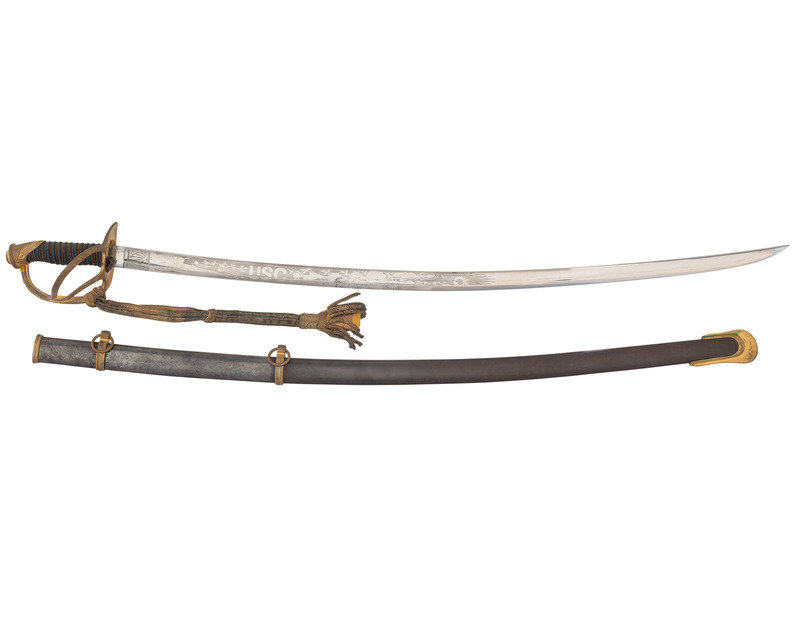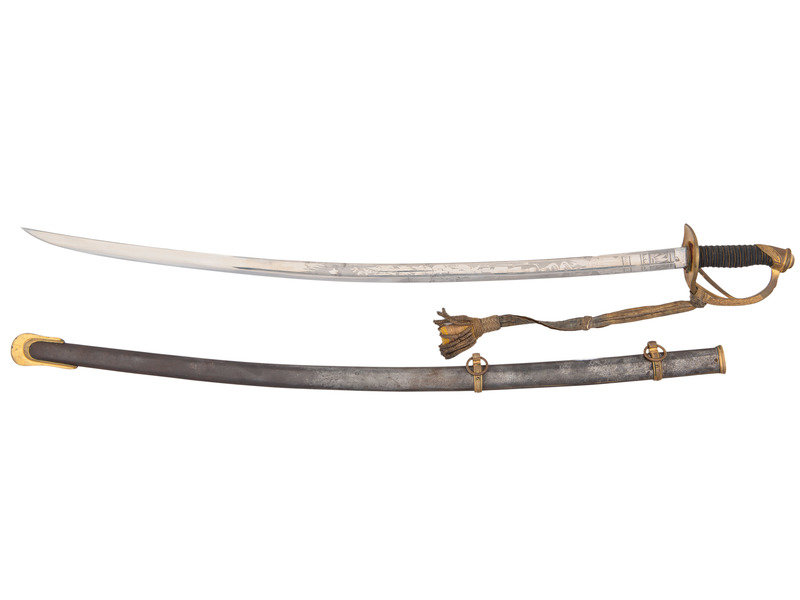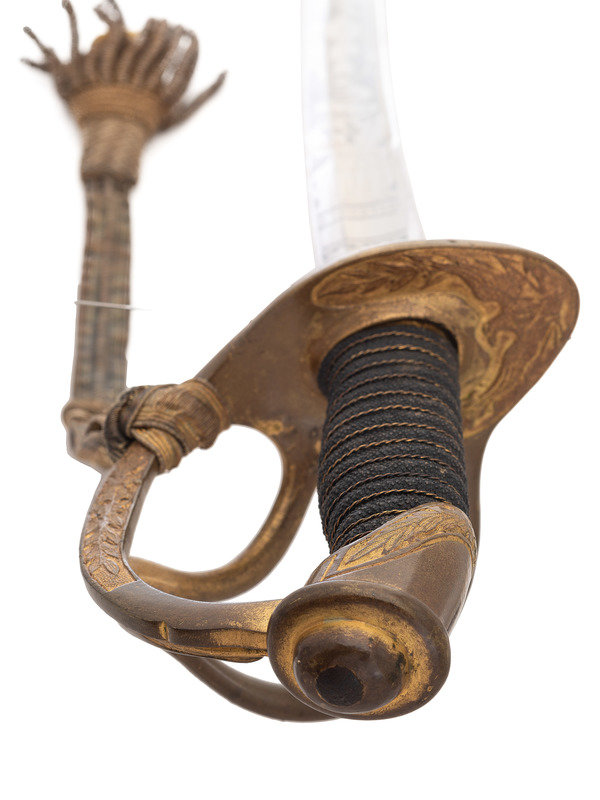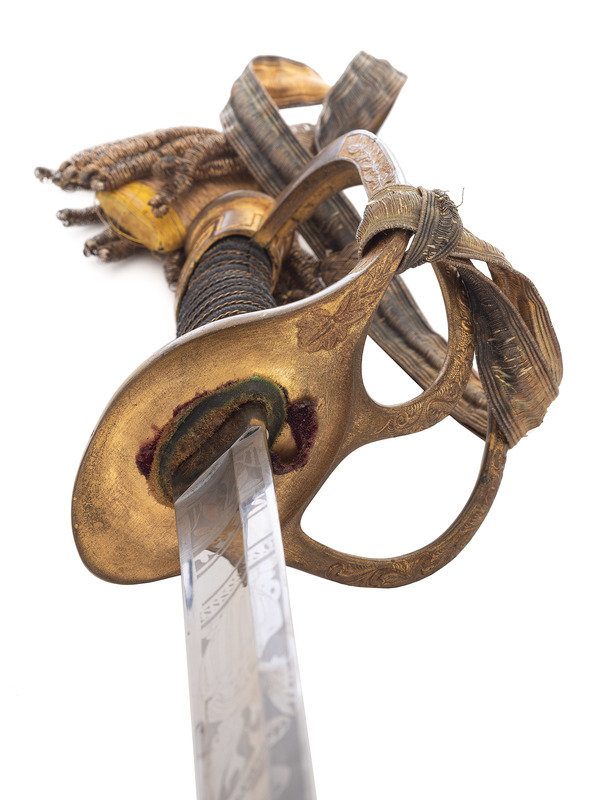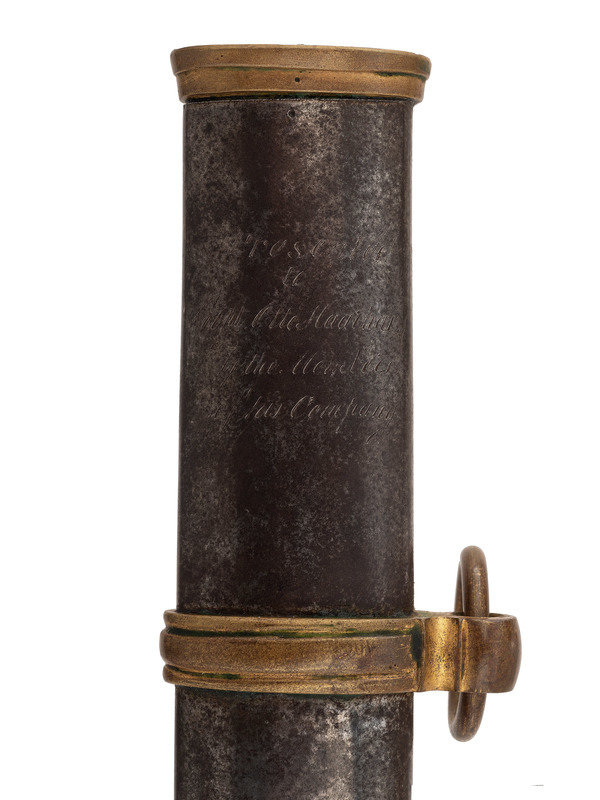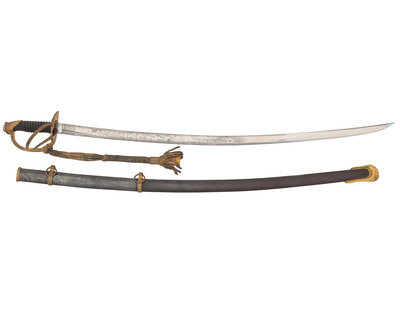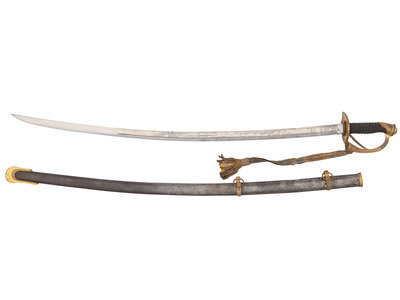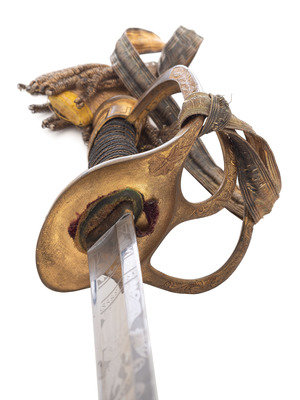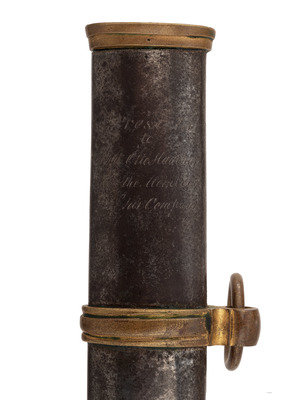Condition Report
Contact Information
Auction Specialist
Lot 322
[CIVIL WAR]. Imported US Model 1840 Cavalry Officer’s saber presented to Captain Otto Harhaus, 2nd New York Volunteer Cavalry, who commanded the Regiment at Gettysburg.
Sale 1046 - American Historical Ephemera and Photography Featuring the Civil War and American Militaria Collection of Bruce B. Hermann
Lots 1-296
Jun 21, 2022
10:00AM ET
Lots 297-560
Jun 22, 2022
10:00AM ET
Live / Cincinnati
Own a similar item?
Estimate
$5,000 -
8,000
Price Realized
$5,313
Sold prices are inclusive of Buyer’s Premium
Lot Description
[CIVIL WAR]. Imported US Model 1840 Cavalry Officer’s saber presented to Captain Otto Harhaus, 2nd New York Volunteer Cavalry, who commanded the Regiment at Gettysburg.
35 in. curved, single-edged blade with flat spine and 23 1/2 in. stopped median fuller. Overall length 40 1/2 in. Three-branch gilt brass guard with cast foliate decorations, a spread-winged American eagle on the reverse face of the upper guard, and a Phrygian helmet pommel cap. Grooved wood grip covered in shagreen with 14 wraps of double-strand twisted brass wire. Unmarked ricasso, spine of blade etched "IRON PROOF." Blade acid etched for approximately 19 in. with martial, patriotic, and foliate motifs with the obverse blade etched "USC" and reverse etched with a spread-winged American eagle and "E Pluribus Unum "in a ribbon. Browned irons scabbard with gilt brass mounts is engraved below the throat on the reverse in five lines: "Presented / to / Capt. Otto Harhaus / by the Members / of his Company." Includes a gold bullion sword knot.
Otto Harhaus was 35 years old when he enlisted in the 2nd New York Cavalry on 1 August 1861 and was officially mustered into service and commissioned as the Captain of Company G on 30 August 1861. He was promoted to major on 1 March 1862, lt. colonel on 16 June 1863 and finally colonel on 1 April 1864. He was mustered out of service on 10 September 1864. The 2nd NY Cavalry, known as the Harris Light Cavalry was originally organized as 12 companies lettered A-M without a company “J”. The men were recruited from a variety of cities in the tri-state area, as well as from Indiana, with the men of Harhaus’ Company G being mostly New York state residents coming primarily from New York City, Newburgh, and Fort Edward.
The regiment was initially assigned to Irvin McDowell’s command and served in the defenses of Washington. In March of 1862, the regiment joined the 3rd Division of the First Corps of the Army of the Potomac. Like many US cavalry regiments during the first part of the war, the regiment was often divided with several companies serving in one division and others in another division, as they were needed. Not until the reorganization of the Union cavalry did the regiment regularly serve as a cohesive unit. During the first part of 1862, the troopers of the 2nd saw skirmishes and combat operations at a variety of locations in Virginia and Maryland. That summer, the regiment was engaged at Second Bull Run and finished the year at the Battle of Fredericksburg. In June of 1863, they fought at Brandy Station, and in July were engaged at the Battle of Gettysburg under the command of Lt. Colonel Harhaus. The original Lt. Col. of the regiment, Judson “Kill Cavalry” Kilpatrick had been promoted to colonel and eventually general and was designated to lead much of the Union cavalry in the Eastern Theater. Under Harhaus’ leadership, the 264 men of the 2nd NY would fight bravely at Gettysburg and would continue to fight with the Army of the Potomac through Grant’s Overland Campaign of 1864, during which the regiment would fight at the Battle of the Wilderness and Yellow Tavern, where Confederate General J.E.B. Stuart would be killed. Later in 1864, the regiment would be engaged in the Shenandoah Valley, fighting at 3rd Winchester, Fisher’s Hill, and Cedar Creek. The regiment would end the war participating in the Appomattox Campaign fighting at Five Forks and would be present during the surrender of Lee’s Army of Northern Virginia at Appomattox Court House.
______________________________________________________________________________________
Sword about very fine to excellent with most of the bright polish and frosty etching on the blade and all images crisp and sharp. Blade with some old grease and verdigris along the cutting edge that could be easily cleaned. Brass guard with much of the gilt finish, grip with some wear to the shagreen, retaining the wire with some minor looseness and showing an obvious seam along the upper-right edge of the grip. Blade to grip fit is tight, peen is undisturbed, and the red wool backed white buff throat washer is in place, with some wear. Brazed seam scabbard moderately oxidized with a pleasing brown patina, showing scattered surface oxidation, some lightly scattered roughens, and some pitting on both sides between the middle and lower mounts. Gilt brass mounts with traces of finish. Scabbard body with a couple of very minor dings and dents. Sword knot with moderate wear.
The Civil War and American Militaria Collection of Bruce B. Hermann
